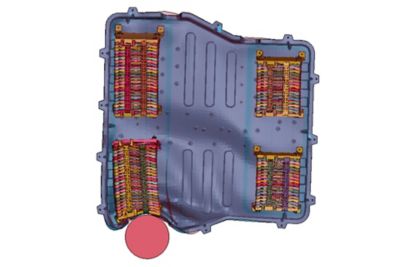Overview
Performance, safety, and hitting time to market all remain challenges for the EV design cycle, with the battery being a critical driver on all fronts. These integral batteries also pose safety and performance challenges, such as thermal runaway, mechanical damage, and degradation. Key aspects of battery structural design involve knowing mechanical design limits and assuring battery durability under mechanical abuse conditions like drop, vehicle crash, and vibration.
Several standards, such as SAE and UL, detail battery abuse and integrity tests needed to verify battery safety. In this presentation, we will touch on some common battery test standards in the industry, followed by Multiphysics simulations, which incorporate thermal, electrical, and structural simulations that build on test data. We will discuss the battery simulation process at cell, pack, module, and integration into vehicle level for different formats such as cylindrical and pouch.
Due to the risk of thermal runaway in an EV crash, a complete multiphysics analysis is required to capture the mechanical deformation that triggers internal shorting and thermal runaway. We'll present a multiphysics EV crash workflow from cell to vehicle level.
What you will learn
- How multiphysics simulations build upon test data from common battery abuse and integrity tests, detailed by standards such as SAE and UL
- A battery simulation process at cell, pack, module, and vehicle integration level for different formats such as cylindrical and pouch
- How multiphysics analysis captures the mechanical deformation that triggers shorting and thermal runaway
Who should attend
Battery systems and cell development engineers, EV battery development team leads, battery pack and system design engineer, EV/HEV battery project engineer, CAE vibration durability, Structural systems durability engineer, mechanical design engineer for battery, battery and pack design engineer
Speakers
- Santosh Kottalgi
- Vidyu Challa












